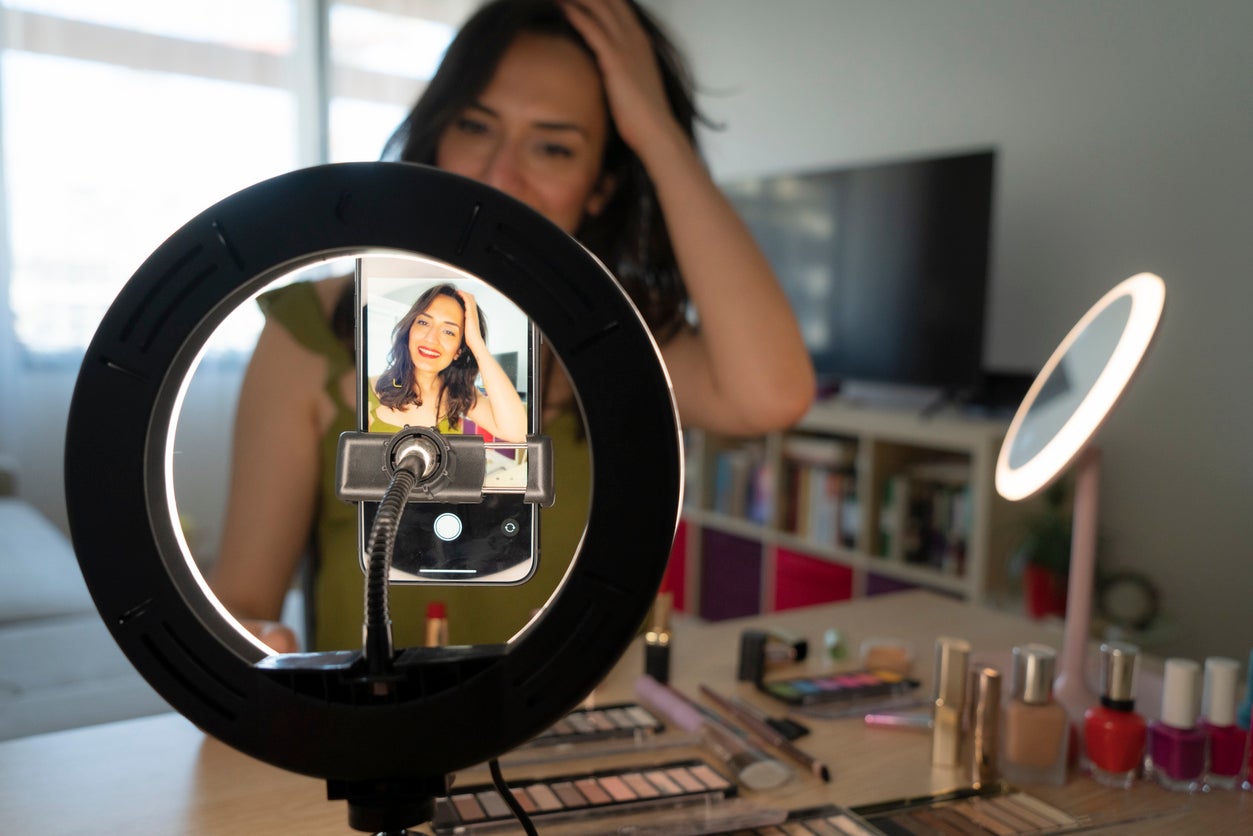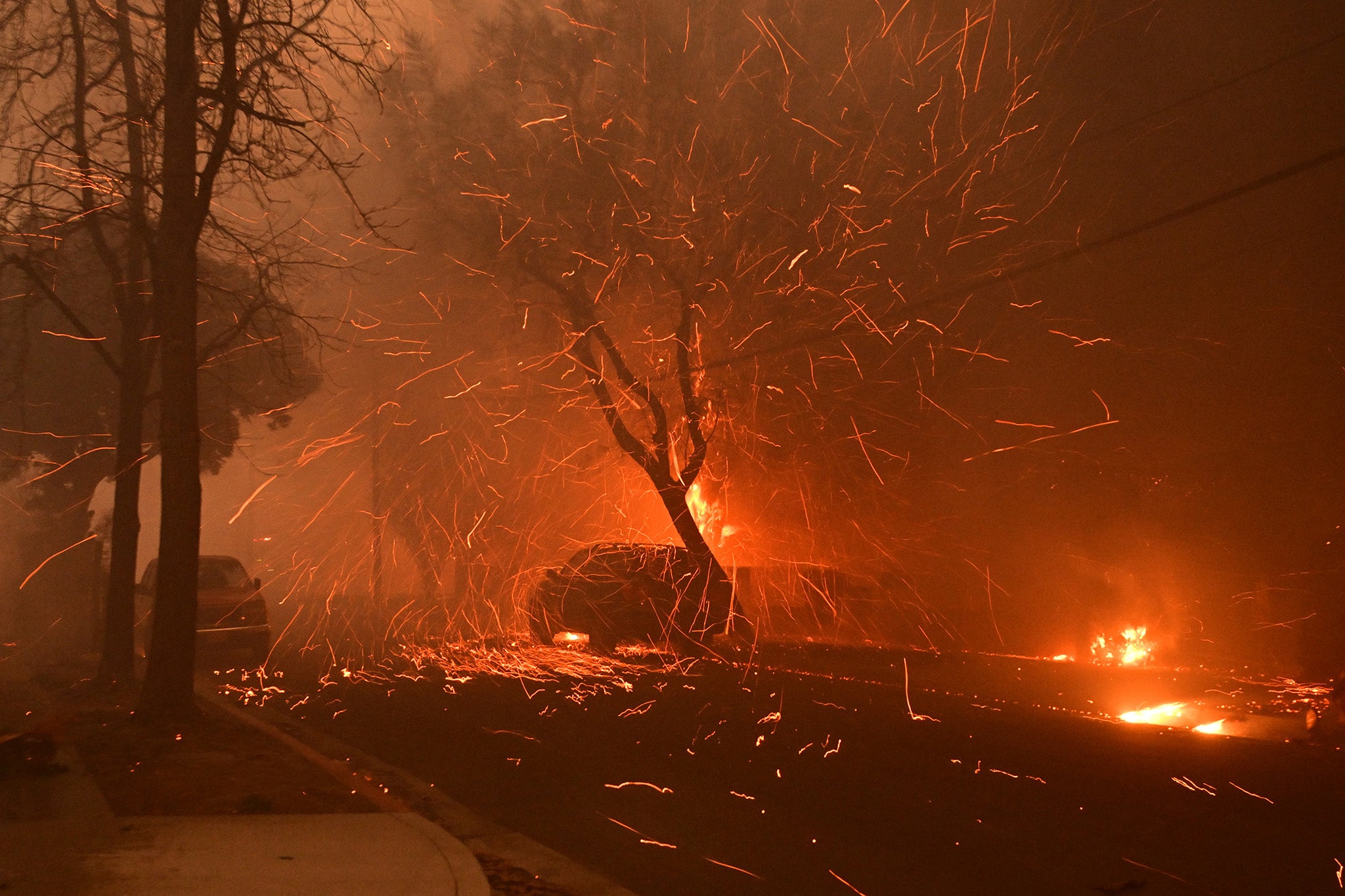
GRWM: How TikTok’s favourite trend finally went too far
Your support helps us to tell the story
From reproductive rights to climate change to Big Tech, The Independent is on the ground when the story is developing. Whether it’s investigating the financials of Elon Musk’s pro-Trump PAC or producing our latest documentary, ‘The A Word’, which shines a light on the American women fighting for reproductive rights, we know how important it is to parse out the facts from the messaging.
At such a critical moment in US history, we need reporters on the ground. Your donation allows us to keep sending journalists to speak to both sides of the story.
The Independent is trusted by Americans across the entire political spectrum. And unlike many other quality news outlets, we choose not to lock Americans out of our reporting and analysis with paywalls. We believe quality journalism should be available to everyone, paid for by those who can afford it.
Your support makes all the difference.
A young woman sits cross-legged facing a ring light. She records herself dabbing blush on her cheeks, wiggling a mascara wand through her lashes and outlining her lips with a nude-toned liner. Everything seems normal – the video is not dissimilar from the thousands of makeup tutorials that exist online – except for the context in which this is being filmed: she’s been ordered to evacuate her home due to the deadly wildfires raging nearby in Los Angeles. “So, LA’s burning right now and I’ve got a few hours to pack my life up and get out of here,” she tells the camera in a chatty tone, swiping a shiny gloss across her lips.
The video in question is titled “GRWM to evacuate” – the acronym being short for Get Ready With Me. It’s an online content format that does what it says on the tin: viewers watch as a person does their hair and makeup, and picks an outfit, while they chat through a rolling bulletin of life updates. The content format has been the backbone of influencer vlogging culture since it began. But after the wildfires ignited across southern California more than a week ago, evacuation-themed videos have taken over – and to a mixed response. One onlooker commented on TikTok: “Doing a GRWM to evacuate is crazy… this is a serious situation. Another added: “Girl, why is your GRWM to evacuate you putting makeup on and not packing?” A third was even more direct: “‘GRWM’? There’s people that are dying??”
The meeting point between “content creation” and the ongoing LA wildfires has become so uncomfortable online that Public Enemy’s Chuck D pleaded with people to stop using the group’s song “Burn Hollywood Burn” – written as a protest song in the Nineties – in videos about the wildfires. Evacuation-themed GRWM videos have been branded distasteful and insensitive but, as I’m sure you’re aware, people on social media will make light of a global news event no matter how serious the topic. Think of when social media users made light of Jay Slater’s disappearance in Tenerife, or when people mocked the news about Mike Lynch’s yacht capsizing off the coast of Sicily. Then there was the meme-ification of Luigi Mangione, who was charged with first-degree murder in the killing of healthcare CEO Brian Thompson in New York.
Before, a GRWM video would have been recorded when an influencer was going to a wedding or fancy event; in recent months, the circumstances have become more and more bizarre. There are the more sombre themes such as “GRWM for my nan’s funeral”. There’s the self-deprecating life update ones: “GRWM to catch my boyfriend cheating”. And the more worrying ones that see pre-teen children sharing their school makeup routine: “GRWM for my first day back at school.”
The GRWM video style has existed since the concept of beauty vlogging went mainstream in the 2010s – following the creation of YouTube in 2005, and Instagram in 2010. The early versions of the GRWM format existed in detailed 40-minute YouTube videos in which the first generation of influencers – such as Zoella and NikkieTutorials – would deliver wholesome makeup how-tos and share their favourite products. It was a simple, harmless and a relaxing pastime. But since the GRWM trend migrated to TikTok, the videos have become more bite-sized – and the topics more strange.
Caitlin Jardine, a social media specialist at the communications agency Ellis Digitalsays that the appeal of the GRWM trend began when vlogging was in its prime, with the videos carrying a “raw and genuine tone”, allowing “viewers to get to know the content creator on a more intimate level”. The very nature of the video set-up, with the blogger usually sitting at their dressing table or standing opposite their bathroom mirror, has become a location for a relatable, confessional, girl-next-door persona that’s alluring to the viewer. “The videos have always been about relatability,” says Jardine. “It’s about breaking that fourth wall so that viewers watching feel like they’ve got an older sibling or friend in the room with them.” Viewing a GRWM video, really, is like being on a one-way FaceTime with a friend.

These days, the GRWM format can be applied to every scenario – just like the wildfires. While I would never want to be writing the rules of how people should react when they receive an evacuation notice, the videos have struck a sinister edge with some viewers. Critics have accused creators of capitalising on a natural disaster for more clicks during a time when thousands of people have lost their homes.
But, as Christina Møller, senior behavioural analyst at the consumer insights agency Canvas8tells me, the motivation for young people to make these videos during a time of crisis could be seen as a coping mechanism. “For some, it’s a way to process and make sense of their current reality, while for others, it provides an opportunity to momentarily dissociate and distance themselves from the emotional weight of the situation,” says Møller. “This blend of self-expression and coping reflects the way social media is woven into how many people navigate and manage their lives, even in moments of adversity.” At the time of writing, more than 40,000 acres have been burnt in southern California since the start of the wildfires on 7 January, and 25 people have died. It’s been described as the worst natural disaster in LA history.
Characteristically, the TikTok response to the wildfires is all very Gen-Z, says Sara Larsen, the associate creative director at the LA-based youth marketing agency Adolescentwhere they analyse social media trends among younger audiences. Larsen believes that the “GRWM to evacuate” videos shouldn’t be taken as offensive or insensitive, but as an indication of how young people choose to manage their feelings during times of uncertainty. “Gen Z-ers are known for using dark humour to cope during times of turmoil, and I think young people documenting what they’re packing to evacuate from devastating fires serves not only as a tongue-in-cheek way to highlight the surreal moment, but as a way for them to feel more stable during life-changing instability,” she says.
According to Larsen, the allure of the GRWM trend, for the onlooker, is the opportunity to relate to the person the video. “In a cultural climate where Americans have never been more isolated, I think there is something intimate and human about the GRWM trend that fascinates people. Getting a peek into the vulnerable everyday moments of strangers helps social media users feel more connected to their peers.”
There is a risk, however, that recording glamorous GRWM videos during a natural disaster could trivialise the reality of what’s happening. Jardine says that creators need to strike a balance between “creativity” and “responsibility” when it comes to topics like these. “Creators need to be mindful that the wildfires are having a drastic impact on so many people, and showing this topic in a more relaxed way on social media could be seen as trivialising it.” As with anything we see depicted on social media, the reality is often very different. GRWM videos are three minutes of bite-sized content spliced from a 30-minute clip. “When you’re making a GRWM, the post-editing can create a really different end result. It’s important to remember that the content of these videos has been sat through and published for a reason,” says Jardine. “It’s been put together to be perceived by audiences in a certain way.”

There are really no limits to where a GRWM can go. People will use them to update their followers on their dating life, dish out breakup gossip or go into great levels of detail about their recent feud with their roommate. Videos with titles like “GRWM to catch my cousin sleeping with my boyfriend” suggest that these content creators don’t mind if their lives verge on resembling a season of Keeping Up With the Kardashians. Raven Baker, also from the youth marketing company Adolescent, tells me that the focal point of these videos is no longer the makeup or the actual getting ready – but the narrative that’s being told. “People are nosy and voyeuristic, the storytelling component of GRWMs is the real hook,” she says. “For smaller or lesser-known creators, the stronger the story, the higher the engagement. Let’s be honest… no one’s sticking around past the first three seconds just for the skin routine and outfit reveal.”
There could be cause for concern, though, about the age group that’s actually consuming these videos. Increasingly, the GRWM format and aesthetic is being emulated by children, who are recording and uploading their own take on the trend to TikTok. Last year, there was moral panic among parents in the UK after groups of young girls started recording their “Back to school” morning routines, showing themselves doing their makeup, putting on their uniforms and eating their cornflakes before leaving the house. At the time, parenting experts raised the alarm over the trend, highlighting the dangers around children’s school uniforms being visible online. But to young girls, though, the GRWM trend has merely become part of everyday girlhood. Larsen suggests that the trend has become enmeshed in that typical rite of passage that a young girl might experience when she starts discovering makeup products and looking up to older women.
“For pre-teen girls, recording a GRWM video is just this generation’s version of trying on their mum’s lipstick in the mirror,” explains Larsen. “It’s nothing new that young girls have a desire to be cooler and more adult, or mimic something that a woman they look up to is doing.” Together, it’s worth asking whether the GRWM trend only intensifies these pressures on the young, in terms of body image, self-esteem and the toxic beauty culture that exists online. “The trend fuels the feelings of comparison and competition, as creators push to ‘one-up’ each other, setting unrealistic expectations for themselves and their audiences,” says Kourtney King, a social media specialist.
Jardine agrees. While these videos may appear authentic and relatable, Jardine suggests that there’s an underlying reason why people might hone in on more newsworthy topics like the wildfires. “The ‘GRWM to evacuate’ videos really come from the TikTok algorithm,” she says. “The fight for viewers attention has never been so competitive, so creators have to really push boundaries.
“Whether that’s positioning as humorous or adding in that shock element, it’ll continue to be adapted.”








